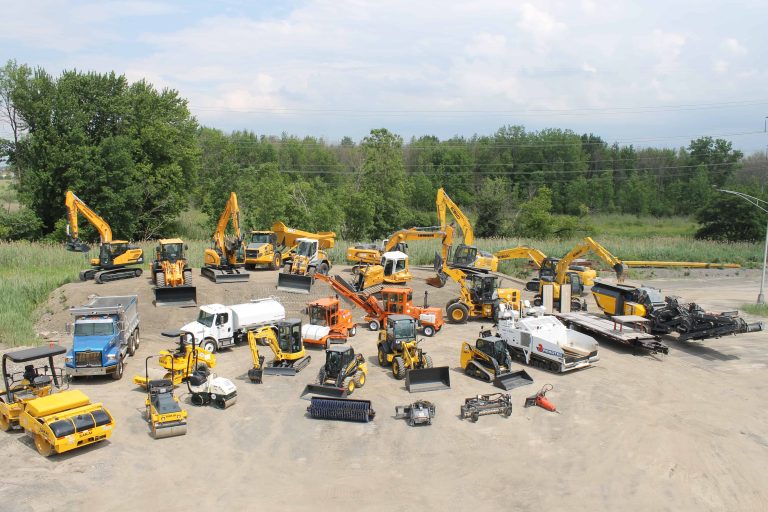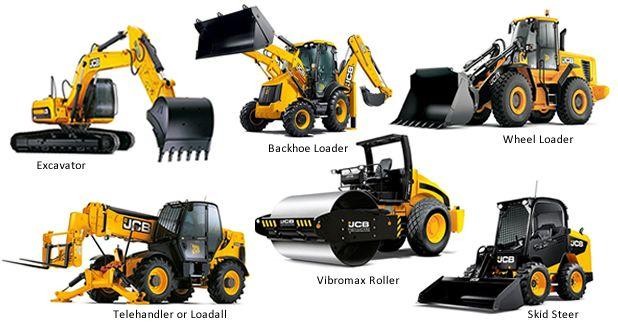Forklift Rental: Heavy Training Equipment for Warehousing and Much more
Forklift Rental: Heavy Training Equipment for Warehousing and Much more
Blog Article
Maximize Your Budget by Understanding the Prices Connected With Building Tools Services
Recognizing the complete range of prices connected with building and construction equipment rentals is important for maximizing your budget. What techniques can be used to successfully manage these expenses and make certain a much more effective rental experience?
Review of Rental Prices
When considering building equipment rentals, understanding the linked prices is vital for reliable budgeting and project planning. Rental expenses can vary considerably based upon several factors, including equipment type, duration of service, and area. The preliminary rental cost typically shows the equipment's market demand and its connected operational abilities, influencing the general expenditure.
Along with the base rental price, supplementary costs may occur, such as transport charges, gas surcharges, and upkeep charges. It is necessary to make up these additional expenses to properly examine the total expense of renting out devices. The rental duration can influence rates; longer rentals may qualify for discounted rates, while temporary rentals could incur higher everyday charges.

Breakdown of Rental Rates
A comprehensive understanding of rental prices is crucial for professionals and project supervisors intending to maximize their budget plans. Rental rates for building tools normally include numerous components, consisting of base rates, time-based fees, and usage fees.
Base prices are the core charges connected with the leasing of the equipment, frequently figured out by the type and size of the machinery. These prices can differ considerably, affected by variables such as devices demand, availability, and local market trends. Time-based costs, which might be daily, weekly, or monthly, offer to suit various job timelines and rental durations.
In addition, rental rates may include use charges, which are suitable when equipment is used beyond a defined threshold, making sure that the rental business can represent deterioration. Seasonal demand variations can also affect rental prices, with peak building periods commonly regulating greater rates.
Furthermore, understanding the rental company's policies concerning maintenance and insurance can give further understanding into the total expense framework. By analyzing these components, professionals can make enlightened decisions, guaranteeing the selection of rental equipment lines up with both job needs and budget plan restrictions.
Extra Fees to Take Into Consideration
Comprehending the details of extra fees is essential for contractors to handle their overall leasing costs successfully. Past the basic rental rates, numerous supplementary charges can dramatically influence the overall cost of devices service. These charges usually include shipment and pickup fees, which can differ based upon range and description logistics associated with moving the devices to and from the job website.
Additionally, some rental business might enforce gas additional charges if the equipment is returned with less fuel than when leased. It is additionally important to recognize possible cleaning fees, especially for specific devices that needs complete maintenance after use.

Thoroughly reviewing the rental agreement and clarifying these additional charges in advance can help contractors guarantee and stay clear of unexpected costs that budgets remain intact throughout the job lifecycle.
Repair And Maintenance Costs
Routine maintenance and repair expenses are commonly ignored factors that can significantly affect the general price of construction tools rentals. When renting tools, it is critical to consider not just the rental costs yet likewise the potential expenses related to keeping the equipment in optimum operating problem.
Many rental companies consist of fundamental upkeep as component of the rental arrangement; however, much more substantial repairs or unexpected failures can lead to added costs. It's important to evaluate the rental agreement thoroughly to recognize what maintenance solutions are covered and what duties fall on the renter.
Additionally, tools that is not properly maintained can bring about inadequacies on the task website, potentially creating hold-ups and enhancing job expenses. To minimize these threats, it is recommended to conduct normal inspections and preserve open interaction with the rental copyright regarding any concerns that arise throughout usage.
Insurance Policy and Responsibility Costs
Insurance policy and responsibility expenses are vital parts that can dramatically impact the total expenditure of construction equipment rentals (boom lift rental). These prices make sure that both the rental company and the client are safeguarded from potential monetary losses emerging from accidents, damages, or burglary during the rental duration

In addition, clients need to be aware of any type of deductibles or exemptions in the insurance plan, as these can affect possible out-of-pocket expenditures. Recognizing the terms and problems of any type of insurance protection is crucial to avoid unanticipated costs. Eventually, budgeting for insurance policy and liability expenses can help guarantee a smoother rental experience and safeguard against monetary risks related to building and construction tasks.
Verdict
In final thought, a comprehensive understanding of the expenses linked with building article source equipment rentals is necessary for effective budget plan management. Ultimately, informed decision-making pertaining to tools leasings contributes to the general success of construction endeavors.
Rental prices can vary substantially based on several variables, consisting of equipment kind, period of leasing, and place (equipment rental company). The rental period can impact pricing; longer services may qualify for reduced rates, while heavy duty ring roller temporary rentals may incur higher everyday costs
By conducting extensive research study and engaging with reputable rental firms, professionals can efficiently browse the complexities of rental prices, ultimately optimizing their financial resources.
Beyond the common rental prices, various additional costs can significantly affect the total expense of tools rental. Rental business often provide responsibility insurance coverage that covers injuries to third parties or damages to residential property, while tools damages insurance policy can cover the price of repair work or substitute if the rented equipment is harmed.
Report this page